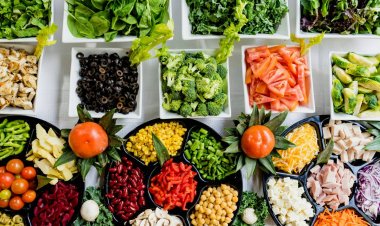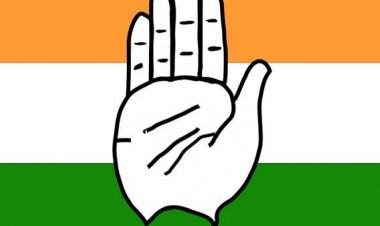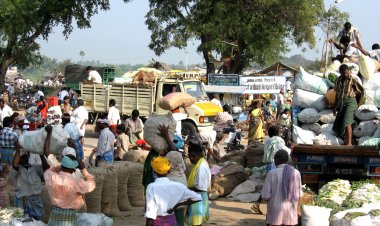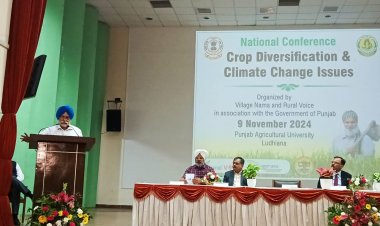With global wheat prices soaring due to Russia’s blockade of top wheat exporter Ukraine’s Black Sea ports, India appeared poised to help fill some of that void on the global market in early 2022. Coming off several years of bumper harvests and with stockpiles at an all-time high, India was positioned to become a player in international wheat trade. In the 12 months leading up to March 2022, India, the world’s second-leading wheat producer behind China, exported a record 7 million tonnes of wheat, up 250% from the prior marketing year. A new age of opportunity for Indian wheat producers appeared to be dawning.
“We already have enough food for our people, but our farmers seem to have made arrangements to feed the world,” Prime Minister Narendra Modi proclaimed in April 2022. But just a few weeks later, the Modi government abandoned its plan for increased foreign shipments and instead issued a ban on wheat exports. Why did its plans change so abruptly and drastically?
Oscar Tjakra, senior research analyst, RaboResearch Food and Agribusiness, Asia, said in the November issue of WORLD GRAIN journal that Indian officials reversed the course as “a result of a smaller-than-expected marketing year 2022-23 wheat harvest, rising food inflation, and low government wheat procurement under its MSP program which affect the government’s ability to supply wheat under its domestic food assistance program.”
Tjakra noted that the 2022-23 crop was progressing well through February 2022, raising expectations of another record wheat harvest. But an unprecedented spike in temperatures in mid-March 2022 led to an elevated percentage of smaller, shriveled and immature grains, sending wheat yields lower. The ban remains in place 18 months later as the government, along with the rest of the world, tries to deal with high food inflation even though various agencies are forecasting a record global wheat crop in 2023-24.
Interestingly, although the government has flooded the market with highly subsidized wheat from state stockpiles and has kept the export ban in place, it has been unable to bring food inflation down to its desired level. In addition to supplying wheat to the poor at a steep discount, the government in April 2020 started providing free wheat to the millions of beneficiaries to stave off food shortages during COVID-19 lockdowns, Tjakra said.
“The free distribution of grain led to a drawdown in the government’s food stocks, and lower wheat output in 2022 and 2023 meant slower-than-expected replenishment of inventories at state warehouses,” he said, noting that although government wheat stockpiles on Sept. 1, 2023, were 1.2 million tonnes higher than the previous year at 26.04 million tonnes, it was still lower than the 10-year average.
“Despite banning wheat exports, Indian domestic wheat prices still increased in 2023,” Tjakra said. “Domestic wheat prices in India reached their highest point in nearly eight months in September 2023.” The decision to ban exports isn’t only tied to supply and demand fundamentals. There’s a political element as well, Tjakra said.
“It doesn’t seem the Indian government will lift the rice and wheat export bans anytime soon,” Tjakra said. “The government will most probably only lift these bans after the election next year.”
Food inflation, which accounts for nearly half of the overall consumer price basket in India, rose 6.56% in September as compared with 9.94% in August. September inflation was above the Reserve Bank of India’s (RBI) upper tolerance band of 2% to 6%. When India decides it has adequate wheat stocks and food prices decline to acceptable levels, it has a product that has become more desirable on the global market in recent years, Tjakra said.
“Indian wheat quality has improved in the past few years due to application of new seed varieties,” he said. “Alongside improved farm practices and better mechanization, better seeds have improved Indian wheat quality. Indian wheat with 12% to 13% protein is pretty common now.”
More mouths to feed
Having recently surpassed China as the most populated country in the world at 1.4 billion people, accounting for nearly 18% of the global population, keeping its citizens fed at an affordable price is a growing challenge. Not only has India’s population surpassed China, which has attempted to limit population growth in recent years, it is growing at a much faster rate, increasing by 0.8% from 2021 to 2022. By contrast, China’s population expanded by just 0.1% in 2022.
Besides climate change, Tjakra cited other issues that negatively impact India’s ability to produce wheat, including small land holdings, inadequacy of seeds for newly released varieties, lack of information among farmers about new technologies, late sowing, high-priced inputs, poor seed quality, non-availability of labor and low organic matter in the soil.
There’s also the issue of the country’s water supply. A 2017 study predicted that Punjab, by far the country’s biggest wheat-producing region, would exhaust its groundwater supply by 2039. “It’s certainly a legitimate concern,” Tjakra said. “To address this issue, the Punjab government levies charges for extracting groundwater from the state on all non-exempt users, including industry. This policy, however, does not cover groundwater use for agriculture, drinking and domestic purposes.
“The government also tries to save groundwater by making farmers quit tubewell-based irrigation in favor of canal water. However, farmers’ reliance on the ‘convenient’ use of tubewells makes them reluctant to switch.” Like many developing countries, India has seen growing demand for wheat-based food products in recent years. But demand for processed wheat products only accounts for 12% to 14% of wheat consumption in India, Tjakra said.
“Households, local restaurants and eateries account for 80% of the wheat consumed domestically for flour,” Tjakra said.
In an effort to become more self-sufficient in grains and oilseeds, China, which for many years was opposed to growing genetically modified crops, recently expanded the pilot planting of genetically modified corn and soybeans, aiming to accelerate the commercialization of biological breeding. The pilot planting began in 2021, and it was expanded to farmland in North China’s Inner Mongolia Autonomous Region and Southwest China’s Yunnan Province in 2022.
Will India, which currently only allows the cultivation of GM cotton, follow suit with corn and soybeans, and will it ever consider growing GM wheat? The prospect of growing GM wheat commercially is gaining momentum in South America. And given the climate-related shortfalls of wheat, other countries are considering whether to go that route.
“I wouldn’t say the application of GM varieties of wheat and other crops is completely off the table in India,” Tjakra said. “However, this will depend on public acceptance (including farmers) of GM technology.”
The Indian government has taken measures, many of which have been effective, in the past 20 years to address food security. The National Food Security Mission (NFSM) was launched by the government in 2007-08 to increase the production of rice, wheat and pulses. “The government is going to achieve the objective of this scheme through area expansion and productivity enhancement in a sustainable manner in the identified districts of the country,” Tjakra said.
“Other than that, measures like restoring soil fertility, improving productivity at the individual farm level, enhancing the farm economy, etc., will also be taken in order to improve production,” Tjakra said. “Special focus will be on the low-productivity areas and high-potential districts.”
He noted that under the NFSM, distribution of seeds, farm machinery, conservation tools, efficient water application tools, plant protection, nutrient management, and cropping systems-based training to the farmers are provided. Also, as part of a larger effort to boost modern grain storage capacity, the Food Corporation of India (FCI) plans to complete construction of numerous 3-million-tonne-capacity wheat silos throughout the country by the end of November, he said, quoting a newspaper report.
India needs more modern grain storage facilities to reduce post-harvest waste. The FCI already has completed construction of 1-million-tonne and 2-million-tonne silos and eventually, as part of this grain storage expansion project, plans to build wheat silos with 9.4 million tonnes of capacity during the next three to four years at 196 locations across the country.
Protectionist measures with rice
While India has never been a significant player in global wheat trade, it has been historically at or near the top in rice exports due to a significant surplus of the food grain. In fact, India typically accounts for around 40% of world rice trade. But the recent spike in food prices has led the Indian government to ban exports of non-basmati rice and include a 20% duty on parboiled rice exports.
The ban impacts 7-8 million tonnes of Indian rice exports, or 15% of global rice trade. It remains to be seen how much of the rice impacted by the ban will be diverted to domestic consumption. While the Indian government pulls out all the stops to decrease food inflation ahead of the 2024 election, the export bans on wheat and rice and other protectionist measures are negatively impacting countries who depend on imports of the world’s two most important food grains.
Countries like Bangladesh, Sri Lanka, United Arab Emirates, Yemen and the Philippines are among the nations that heavily depend on shipments of wheat from India. And the rice export ban, which was announced in August, has contributed to a spike in global rice prices. The United Nations’ Food and Agricultural Organization’s All Rice Price Index in September fell by 0.5% month-on-month but was still 28% higher than the same month in 2022.
According to a CoBank report, Indian rice farmers are insulated from falling rice prices by the government so rice production will not likely be impacted by the export ban. “Rice consumption in India has generally been stable over the past few years,” Tjakra said. However, domestic rice consumption over the last few years has been stimulated by the Indian government’s efforts to build and offload its rice stocks to manage food inflation concerns.
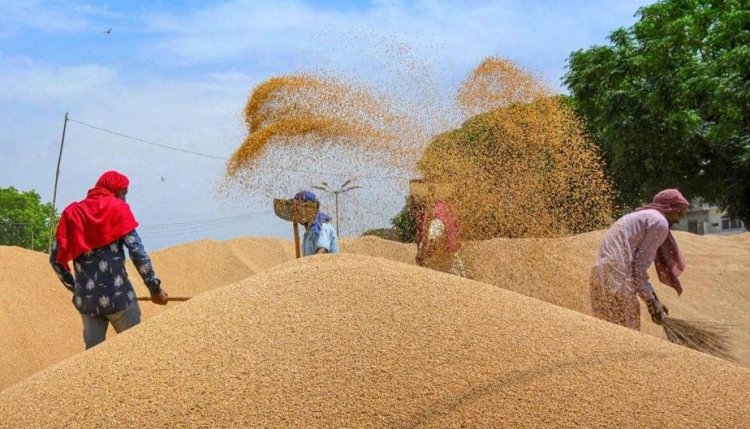



 Join the RuralVoice whatsapp group
Join the RuralVoice whatsapp group




















